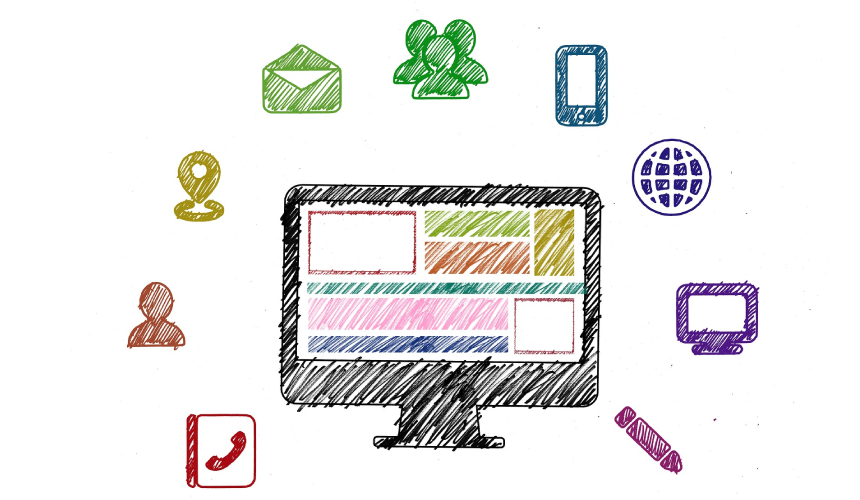

"Holding on to anger is like grasping a hot coal with the intent of throwing it at someone else; you are the one who gets burned."
The Budda
Anger is a normal human emotion. We all experience it, just as we feel other emotions like happiness, sadness and worry. Young people becoming angry can be the result of feeling attacked, frustrated, invalidated or deceived.
Anger can be a useful response as it can help to identify problems, help us defend ourselves and stay safe as part of our fight or flight response, and can help us to move on by creating change. Constructive anger can help young people to find the strength and courage to protect themselves and stand up to injustice.
For young people who have developed a healthy way of managing their emotions, anger is often transitory; it feels manageable and does not have a big impact on their lives. Experiencing anger in a manageable way relies on having healthy ways to recognise, express and deal with anger when it arises. However, some young people find it difficult to control their emotions, which can then result in anger being expressed in destructive or unhelpful ways which have detrimental effects on their wellbeing.
Anger becomes a problem when it harms you or those around you.
Unhelpful ways of expressing anger can include:
Anger is a very physical emotion, causing a number of physiological changes such as feeling hot, sweating, tensing muscles, fast breathing, heart beating quickly, churning stomach, or a flushed face.


On the psychological side of anger, we release neurotransmitters known as catecholamines. These chemicals cause a young person to experience a burst of energy that lasts for several minutes. A desire to take protective action is related to this burst of energy. Anger results in a narrower focus of attention, making it difficult to focus on anything other than the source of their anger. Further neurotransmitters and hormones including adrenaline and noradrenaline are released, which result in a longer-lasting heightened emotional state.
Anger may be the most objective response a person displays, however, it often is an expression of a range of emotions under the surface.
Uncontrolled anger is harmful for the angry person and their target. It can result in the breakdown of relationships, difficulty concentrating at school, loneliness and a marked impact on physical and emotional health. A person’s tendency to develop problematic anger is influenced by a variety of factors such as:

Without healthy responses, the physiological response to anger and the adrenaline that gets released in the process can result in a young person being in a heightened emotional state lasting from hours to days. Entering these states regularly reduces a young person’s threshold for anger, making it easier for them to activate their fight or flight response – even for minor irritations which would not usually trigger this response.
This heightened state also interferes with a young person’s ability to clearly remember details of an angry outburst. Moderate levels of psychological arousal are necessary to help the brain learn, concentrate and for memory, however when the optimum level of arousal is exceeded it is more difficult for new memories to be formed as the prefrontal cortex shuts down.
Anger’s ability to affect a young person’s thoughts, physical sensations, behaviour and mood can become cyclical result in what is termed the cycle of anger.

Whether adult or a young person, we all experience anger at some points in life. However, there are some indicators as to when anger can become concerning:
If anger is ignored or not expressed properly it might instead be expressed in a disruptive way, or internalized which increases the risk of self-harm, anxiety and low mood.
As with all matters of wellbeing, taking time to focus on areas such as anger helps to build an outlook that feeds into the interactions a teacher has with the young people they support. Whilst we are preparing ourselves to help others we must also look after ourselves. We’ve got some advice and guidance on this in our teacher wellbeing section.
Ways of helping a young person varies for person to person and therefore spending time with young people, helping them to recognise their triggers and identifying which calming activities work for them will help you to help them during periods of increased frustration or anger.
In order to counter a young person’s lost temper, we first need to reframe the behaviour of the child or young person with a viewpoint that this is someone that is not simply losing control, but who has an impaired capacity for monitoring and managing their own emotions because of their developmental stage. With this in mind, it is important to talk calmly to a young person when they are angry to try reduce some of the physiological and psychological effects they are experiencing.
Although anger can take over an individual’s attention, the prefrontal cortex of the brain can keep emotions in perspective. Helping a young person to emotionally regulate themselves involves developing ways to use their prefrontal cortex to their advantage and control their fight or flight response. The prefrontal cortex is the part of the brain associated with exercising judgement and keep emotions in proportion. Therefore, anger management techniques aim to support prefrontal cortex functioning by helping young people to have more control over how they react when face with anger-provoking situations.
One of these techniques is to help children recognise the signs of anger and frustration, which can help them to better communicate their feelings. This may involve talking to young people about the physical effects of anger and frustration, and the situations or circumstances that may trigger feelings of anger. Putting emotions into words helps young people to study emotions without having to feel them. Also, talking about helpful strategies with young people will help them to explore which strategies they may find helpful in times of increased frustration or anger.
Examples might be:
Progressive breathing These activities can be difficult for young people to engage in independently and therefore practicing these techniques during calmer periods will help provide them with the skills to use at other times.
Physical activities Actions such as clenching and unclenching their fists, tearing up newspaper, holding ice or throwing pillows may help some young people to de-escalate from a period of increased psychological arousal. Others may respond well to being offered a distraction activity that they enjoy in order to divert their focus from the source of anger or frustration.
It is important to make young people aware of who they can talk to and where to go if worried about themselves or someone else experiencing anger, and to provide young people with an environment that promotes exploring ways of managing difficult or distressing scenarios. These aims might be achieved in the form of posters or displays, which young people can be involved in creating and then sticking around the school.
Remember: young people need to know that anger is not necessarily a bad emotion, but having ways to tolerate and deal constructively with anger are crucial features of maintaining healthy wellbeing.
Anger is a normal human emotion that we all experience. Manageable levels of anger are helpful to young people if they need to defend themselves, stay safe, and help identify problems and make changes. Anger is usually transitory and manageable, but this relies on having healthy ways to recognise, express and deal with anger. Anger can become a problem when it is expressed in destructive or unhelpful ways that can have negative effects on mental wellbeing.
Anger causes a number of physiological and psychological changes including feeling hot, sweating, fast breathing, tensing of muscles, churching stomach and rapid heart rate. The aftermath of anger can also cause feelings of regret, guilt, grief, fear, helplessness and shame.
Anger expressed by young people can be a way to communicate that they are scared, frustrated, experiencing injustice, wanting to gain control, in pain, experiencing memories of a traumatic event, or in uncomfortable physical states such as tiredness, headaches or hunger.
If anger is ignored or not expressed healthily, it can lead to internalization or disruptive behaviours which increase the risk of self-harm, anxiety and low mood.
Ways of helping a young person varies for person to person and therefore spending time with young people, helping them to recognise their triggers and identifying which calming activities work for them will help you to help them during periods of increased frustration or anger.
( resources found)

















How useful was this info?
Click on a star to rate it!
![]()
© Copyright Breathe 2020- 2024
Terms and Conditions | Privacy Policy
supporters & partners 



![]()
